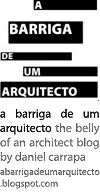I’m not a pink cow
Published Saturday, November 29, 2008.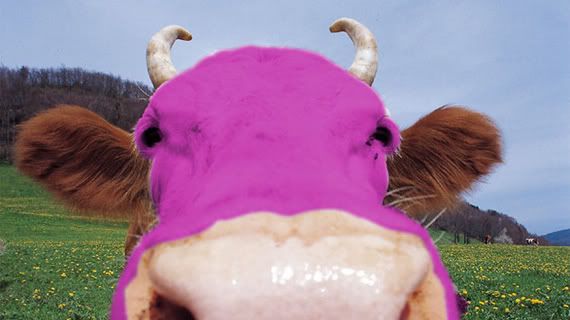
Look! It's a pink cow!
Seth Godin's presentation on TED (via Staffan Estberg) is a great starting point for reflection on what grasps people’s attention. The guy is hilarious and presents some startling ideas on what makes things “remarkable”. The pink cow metaphor, however, raises some serious thoughts when you address the issue of architecture – which he does – and even blogging. Here’s my two cents about it.
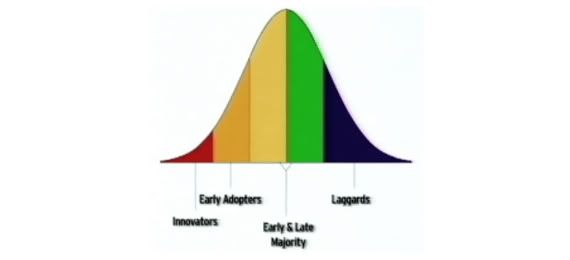
Seth explains that for a long time marketers have been targeting the “early and late majority”, that’s the big group in the center of the graphic. He says that’s a big mistake because those are the guys that are good at ignoring stuff. He’s right. So the right thing to do is to seize the attention of the “innovators” and “early adopters”, those are the guys that are obsessed with something, the ones that get engaged enough to spread the word around.
So I’m wondering if this isn’t a bit of a contradiction. Because these folks at the beginning of the graphic aren’t necessarily the ones that care about pink cows. Now everyone stops to stare at a pink cow now and then. But after a while it becomes just a gimmick. The novelty device becomes as boring as everything else in the stream of things. Do you still care about “the tallest building in the world”? Fancy for a “rotating tower”? The thing isn’t built yet and I’m already yawning.
So if you want to target these guys maybe you have to show them more than a pink cow. In fact, you don’t need a pink cow. You need to explain the cow, contextualize it, and make them think “hey, I didn’t now cows did that”. That’s were blogs come in. Because an interesting blogger is someone who provides perspective and context. The path to success is specificity and depth, and that’s what this specific group of obsessed people is looking for. It may take some time, but if you’re good at it, they will come to see what you’re up to.
Now I’ve been blogging for a few years and I’ve learned some tricks in the process. Let’s say I publish a brand new set of images of the latest building by a famous architect. It’s a safe bet and I could name a few blogs that I’m sure are going to link to it. And I’ll get a few extra hundred readers from it.
But say I publish a completely unusual outstanding piece of work by an architect that you’ve probably never heard of. I’m sure I won’t get one link from the guys that play it safe. But the guys that are thinking outside the box will become engaged, comment, link and share. In the process, you’ll find yourself becoming more established on the web.
In a way, visibility on the web is a bit like a stock market and the currency is credibility. It’s not something you build in a day, but it can be done and it’s open to everybody with a brain attached.
That’s where I don’t get some bloggers who say out loud they don’t care about how many visitors they get. It’s a respectable attitude when you’re focused on maintaining a specific style and quality of blogging independently of its popularity. But when you have no quality and no visibility, of course you don’t brag about visitors.
Maintaining quality while being specific is exactly what makes blogs successful. One fast look at some of the most popular architecture blogs around shows just that. And being popular, or as Seth Goodin says, remarkable, is important because it will measure your ability to expand into the web, through individual visitors, linking blogs and feed readers.
The greatest thing about blogs is that they attract a specific kind of reader. You may find yourself unable to reach out to the big majority, but you’ll see that it’s possible to create your niche of interest, attracting people that care about the things you’re passionate about just as much as you.
So let’s take a good look at that cow, shall we?
The Animals Save The Planet
Published Tuesday, November 25, 2008.
This is a few months old but it’s still too fun not to post. Apparently the Animal Planet got together with the makers of Wallace & Gromit to produce a series of short clay animation films dedicated to promote a greener lifestyle. Sustainability, fun and simple, for kids and grown-ups alike: The Animals Save The Planet.
MY PLAYGROUND at the Mountain
Published Saturday, November 22, 2008.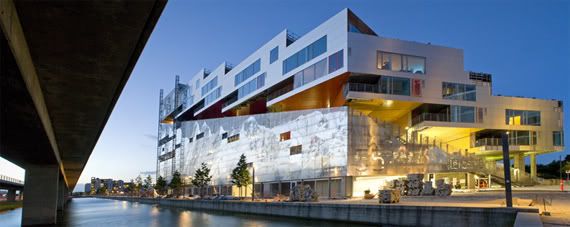
Simply awesome trailer for an upcoming documentary, MY PLAYGROUND by Kaspar Astrup Schröder, featuring the Danish performance freeruners Team JiYo. «It is a film about movement, tricking, freerunning and parkour engaging fully BIG’s recent project the Mountain Dwellings as backdrop. The Mountain Dwellings were recently awarded the Best Housing Project in the World at the World Architecture Festival in Barcelona.»
Here is the video.

The website of Frederico Valsassina has just been updated, portraying more than twenty years of professional activity in the field of architecture.
FuelMyBlog of the day
Published Thursday, November 20, 2008.
Weeeeee!
A short note to announce that I’ve just made it as blog of the day on FuelMyBlog.com. Pretty impressive, considering there are only 365 of those each year. :)
Seriously now, my big thanks to all the beautiful folks at FuelMyBlog and on the FMB blog for this wonderful honour. You’ve made my day!

Image credits: LIFE.
In case you’ve missed it, here’s the link to Google’s database of the LIFE Photo Archive. There are plenty of things to see including a huge amount of previously unpublished material, being presented to the public for the very first time. Above is a striking image of a group of young boys being trained during the Youth Movement, in the 1940’s, one of many photographs that you’ll find tagged under Portugal.
Olga Sanina + Marcelo Dantas: Ayuntamento de Madrid Book Fair Pavilion
Published Saturday, November 15, 2008.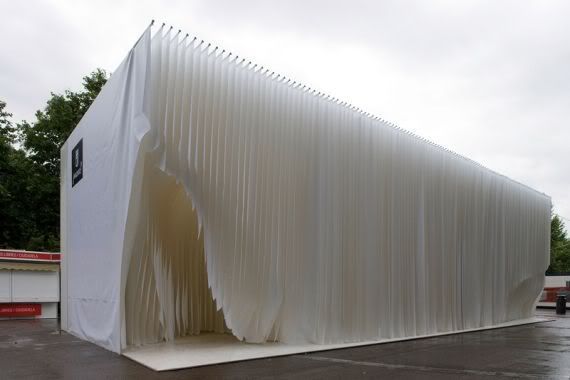
Image credits: Miguel de Guzman, courtesy of the architects.
Architects Olga Sanina and Marcelo Dantas won the international competition for the design of the Pavilion of the Ayuntamento de Madrid with a proposal titled La Casa de Librio (The Book House), built for this year’s edition of the Madrid Book Fair.
Walking through pages - such were the words used by blogger Judit Bellostes to describe this object, like a book built with pages, vertical sections used to generate an internal cavity of organic topography.
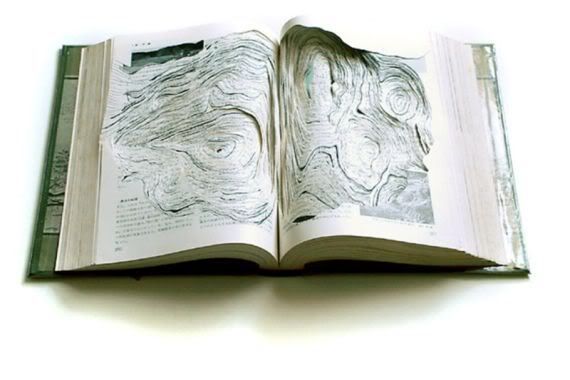
Image credits: Noriko Ambe.
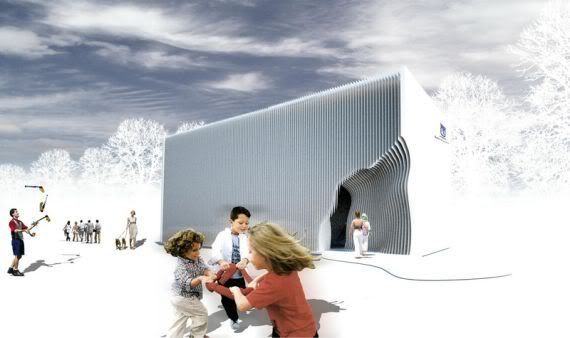
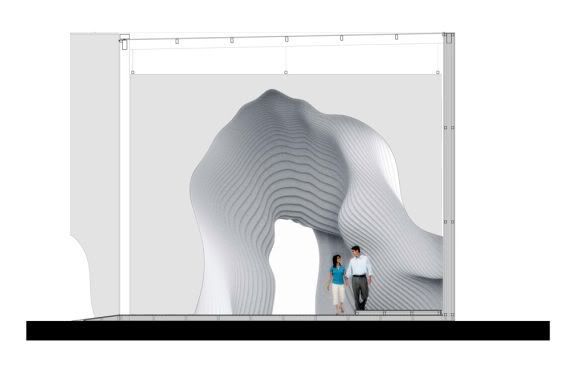
Conceptual design.
In this project, the book became the design motif of an ephemeral installation.
This intention lead us to the work of Noriko Ambe, whose creations extensively developed this theme, manipulating the book as an object in search of new relations of space, scale, rhythm and texture. The architectural quality of her work was of special interest and influence over our design process.
Of her work we retain above all the confrontation of two rules and opposite systems, intertwined in the same object to create a whole of cohesive expression. It’s that unity that we seek in our intervention. A volumetric and spatial whole built of light and shadow, with flattened surfaces and rhythmic textures.

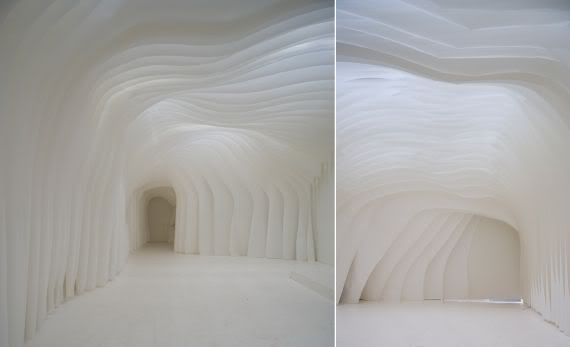
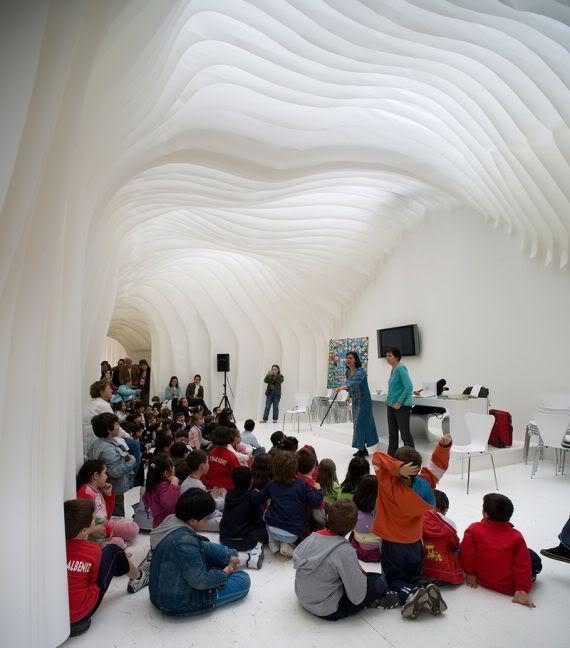
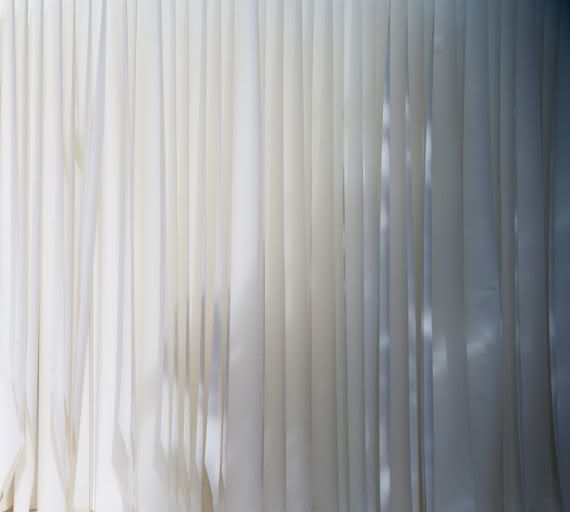
And so we start making other experiments… the constructive system brought to pure simplicity, the materiality and scale close to the ethereal, the bright internal light, filtered by the same surfaces that appeal to touch on the outside and balance with the wind, and the shadows they project.
The sequence of planes originates a volume of dynamic expression, between opacity and transparency, filtering the light to create a sheltered space, like a small hideout. The external regularity contrasts with the nature of the small auditorium within, where life appears fluid and continuous. Simple as a book, surprising and beautiful like the mysteries they enfold.
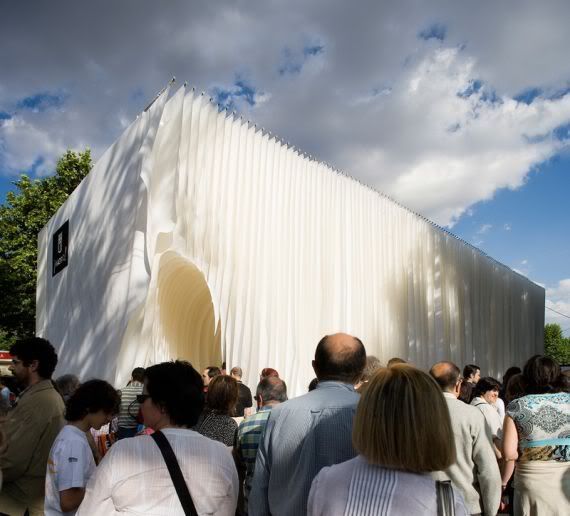
Architecture: Olga Sanina, Marcelo Dantas.
Photography: Miguel de Guzman.
Sampsonia Way
Published Wednesday, November 12, 2008.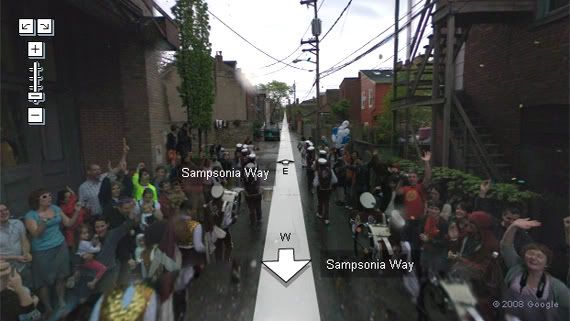
Image credits: Google Inc. Street View.
Street With a View is an urban performance project, quite definitely the most surprising and creative appropriation of Google Maps technology I’ve ever seen.
Street With A View introduces fiction, both subtle and spectacular, into the doppelganger world of Google Street View.
On May 3rd 2008, artists Robin Hewlett and Ben Kinsley invited the Google Inc. Street View team and residents of Pittsburgh’s Northside to collaborate on a series of tableaux along Sampsonia Way. Neighbors, and other participants from around the city, staged scenes ranging from a parade and a marathon, to a garage band practice, a seventeenth century sword fight, a heroic rescue and much more...
Check out Street With a View for all the details on this entertaining project and don’t forget to visit the scene breakdown section for a highlight on all the funny little features. You can also see the end result directly on Google Maps.
Via Swissmiss.
Link bomb
Published Tuesday, November 11, 2008.
A bunch of stuff has been passing through my feed reader that I’ve been unable to process, so here’s a selection of links that you shouldn’t miss.
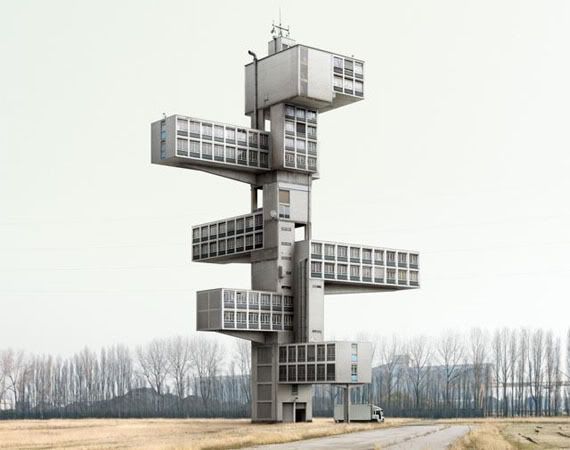
The photocompositions of Filip Dujardin have been receiving attention on the blogosphere for some time and have now made it to Geoff Manaugh’s BLDGBLOG. You can see a full set of images on his latest post: Resampled Space - btw, you won’t find them on the artist’s personal website. This Belgian photographer transforms images of buildings to “create new photographs of improbable, impossible or fantastical buildings”. The result is quite intriguing and exposes a certain abstract quality, a sense of depthlessness that’s evocative of certain manifestations of urban anonymity.
Outstanding professional photography by Carlos Serrão. Some amazing portraits, including a special gallery dedicated to the latest world cup featuring Portuguese superstars Luís Figo and Cristiano Ronaldo. Via Coudal Partners.
A recent interview with David Chipperfield, with an outlook on the consequences of the economic crisis on the market of iconic architecture. Via Archinect.
Fierce bicycle craziness. Architechnophilia presents a video of the Danish Pavilion for the 2010 Expo in China, project by BIG.
Spaces and Storytelling in Kubrick’s The Shinning, an in-depth interpretation of the spatial elements in Kubrick’s horror masterpiece and its psychological implications. Via Coudal Partners.
Men in black: Mirage.Studio 7 presents the architects dress code.
Vote for Obama’s dog. Via Swissmiss.
Zeroes and Ones. Lebbeus Woods talks about computation in architecture.

The photocompositions of Filip Dujardin have been receiving attention on the blogosphere for some time and have now made it to Geoff Manaugh’s BLDGBLOG. You can see a full set of images on his latest post: Resampled Space - btw, you won’t find them on the artist’s personal website. This Belgian photographer transforms images of buildings to “create new photographs of improbable, impossible or fantastical buildings”. The result is quite intriguing and exposes a certain abstract quality, a sense of depthlessness that’s evocative of certain manifestations of urban anonymity.
Outstanding professional photography by Carlos Serrão. Some amazing portraits, including a special gallery dedicated to the latest world cup featuring Portuguese superstars Luís Figo and Cristiano Ronaldo. Via Coudal Partners.
A recent interview with David Chipperfield, with an outlook on the consequences of the economic crisis on the market of iconic architecture. Via Archinect.
Fierce bicycle craziness. Architechnophilia presents a video of the Danish Pavilion for the 2010 Expo in China, project by BIG.
Spaces and Storytelling in Kubrick’s The Shinning, an in-depth interpretation of the spatial elements in Kubrick’s horror masterpiece and its psychological implications. Via Coudal Partners.
Men in black: Mirage.Studio 7 presents the architects dress code.
Vote for Obama’s dog. Via Swissmiss.
Zeroes and Ones. Lebbeus Woods talks about computation in architecture.
The places we live
Published Monday, November 10, 2008.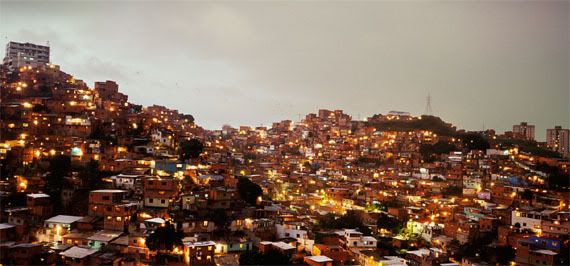
The Places We Live is an incredible online photo-documentary authored by Jonas Bendiksen. From 2005 to 2007 this renowned Magnum photographer documented life in the slums of four different cities: Nairobi (Kenya), Mumbai (India), Jakarta (Indonesia) and Caracas (Venezuela). His images capture not only the dire reality of these massive urban settlements but also the personal histories of their inhabitants, as they cope with the difficult challenges that are presented to them on a daily basis regarding lack of health care, sanitation and electricity.
Link found on My Photojournalism, blog by Miguel Lopes.
Pritzker Architecture Prize website
Published Thursday, November 6, 2008.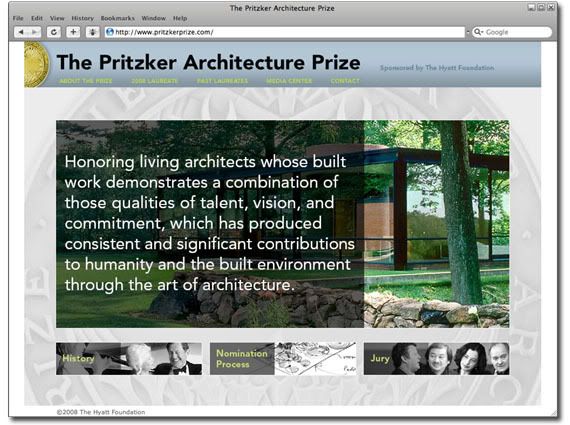
The Pritzker Architecture Prize website has just been renovated. Better design, more content and a media-center that never ends. Go now…

Image credits: Callie Shell
The extraordinary work of many photojournalists is receiving a lot of attention on the blogging arena these days. I believe many of you will like to see the outstanding gallery of photos of President-Elect Barack Obama presented by Alan Taylor on Boston.com’s blog The Big Picture.
I further recommend the set of photos by Time photographer Callie Shell (via O Elogio da Sombra) who followed the Obama campaign pretty closely and has some incredibly personal shots. You may also like to see the website of Brooks Kraft, for additional pictures.
«Peter Zumthor» exhibition pictures on {moshimoshiii}
Published Tuesday, November 4, 2008.
Lots of pictures from the exhibition «Peter Zumthor: Buildings and Projects 1986/2007» on Sushi Lover’s blog {moshimoshiii}.

«Perfect World» exhibition presents the architectural photography of Fernando Guerra. Portuguese Architect’s Guild, Lisbon, opening November 13th.
a.s* - Atelier de Santos website
Published Monday, November 3, 2008.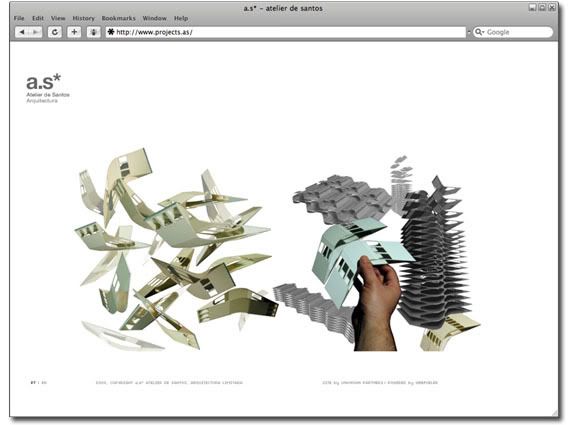
Lisbon-based architectural studio a.s* - atelier de santos has recently announced the launch of a renovated website at www.projects.as, featuring news and information about the team and their projects.
ENGLISH EDITION
The English-only edition of the blog A Barriga de um Arquitecto is no longer being updated. Please visit the main page to access new content, additional information and links.
ARCHIVES | ARQUIVO
September 2008 October 2008 November 2008 December 2008 January 2009 February 2009 March 2009 April 2009 May 2009 June 2009 July 2009 August 2009 September 2009 October 2009 November 2009 December 2009 January 2010 February 2010 March 2010 April 2010 May 2010 June 2010 July 2010 August 2010 November 2010 January 2011 February 2011 March 2011 June 2011 July 2011 October 2011 December 2011
